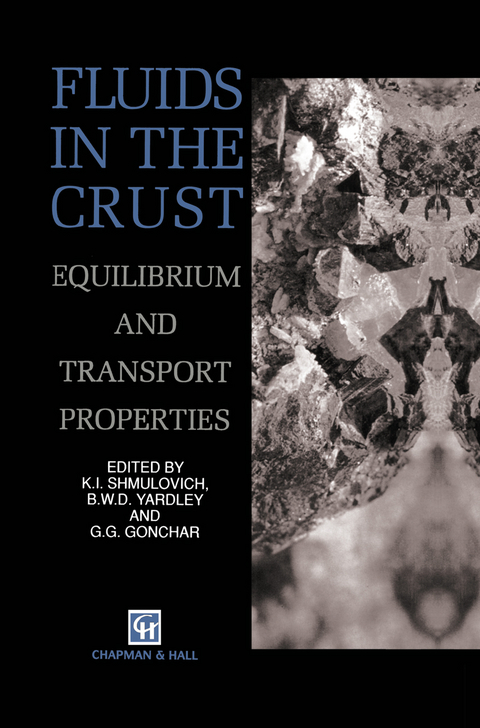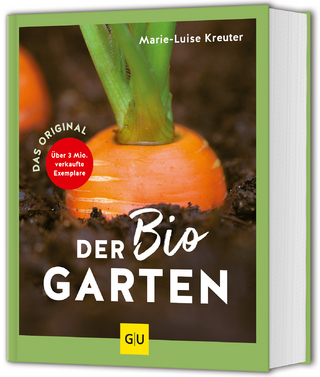
Fluids in the Crust
Springer (Verlag)
978-94-010-4536-0 (ISBN)
1 An introduction to crustal fluids.- 1.1 Introduction.- 1.2 Fluid systems.- 1.3 Mineral solubility and the composition of crustal fluids.- 1.4 Fluid migration through crustal rocks.- 1.5 Conclusions.- References.- 2 Fluids in geological processes.- 2.1 Introduction.- 2.2 Equilibrium systems with fluid components.- 2.3 Dynamic phenomena in systems with fluid components.- Acknowledgements.- References.- Glossary of symbols.- 3 Hydrothermal experimental techniques used at the Institute of Experimental Mineralogy, Russian Academy of Sciences.- 3.1 Introduction.- 3.2 Parts of the apparatus for studying hydrothermal processes.- 3.3 Sampling techniques.- 3.4 Apparatus and techniques for experiments on diffusion and infiltration metasomatism.- 3.5 Summary and conclusions References.- References.- 4 Solubility and complex formation in the systems Hg?H2O, S?H2O, SiO2?H2O and SnO2?H2O.- 4.1 Introduction.- 4.2 Mercury solubility in water.- 4.3 Sulphur solubility in water and the thermodynamics of the aqueous species Saqo, H2Saq, SO2aq, H2S2O3, HSO4?ine> to 440°C.- 4.4 SiO2 solubility in water and in acid solutions (HCl, HNO3) at 100–400°C and 1013 bar.- 4.5 Solubility of SnO2 in water and aqueous electrolyte solutions at 200–400°C and 16–1500 bar.- 4.6 Summary.- Acknowledgements.- References.- Glossary of symbols.- 5 Experimental studies of the solubility and complexing of selected ore elements (Au, Ag, Cu, Mo, As, Sb, Hg) in aqueous solutions.- 5.1 Introduction.- 5.2 Gold.- 5.3 Silver.- 5.4 Copper.- 5.5 Molybdenum.- 5.6 Arsenic.- 5.7 Antimony.- 5.8 Mercury.- 5.9 Discussion and geological implications.- Acknowledgements.- References.- Glossary of symbols.- 6 The influence of acidic fluoride and chloride solutions on the geochemical behaviour of Al, Si and W.-6.1 Introduction.- 6.2 Gain and loss of rock-forming components during greisenization: an example from the Akchatau W?Mo deposit.- 6.3 Results of mineral solubility experiments.- 6.4 Silicification of rocks associated with acid metasomatism.- 6.5 Conclusions.- Acknowledgements.- References.- 7 The behaviour of components in complex fluid mixtures under high T?P conditions.- 7.1 Introduction.- 7.2 Experimental procedures and techniques.- 7.3 Behaviour of the acid component HCl.- 7.4 Behaviour of the salt components MgCl2, CaCl2 and FeCl2.- 7.5 Concluding discussion.- References.- Glossary of symbols.- 8 Phase equilibria in fluid systems at high pressures and temperatures.- 8.1 Introduction.- 8.2 Binary H2O—salt systems.- 8.3 Ternary systems H2O-CO2—salt systems.- 8.4 Fluid immiscibility and magmatic crystallization.- 8.5 Fluid in metamorphism and anatectic melting.- 8.6 Phenomena accompanying the two-phase fluid state.- 8.7 Conclusions.- Acknowledgements.- References.- 9 Diffusion of electrolytes in hydrothermal systems: free solution and porous media.- 9.1 Introduction.- 9.2 The diffusion of the electrolyte $$ {A_{{{v_1}}}}/,{B_{{{v_2}}}} $$ in dilute solutions.- 9.3 P?T?m dependencies of diffusion coefficients in electrolyte solutions.- 9.4 Theoretical calculations of transport properties of rocks, based on the data on functions of microcrack size distributions.- 9.5 Diffusion of electrolytes in pore solutions: correction for the electric double layer (EDL) effect.- 9.6 Diffusion of NaCl in pore solutions of granite to 600°C.- Acknowledgments.- References.- Glossary of symbols.- 10 Thermal decompaction of rocks.- 10.1 Introduction.- 10.2 Experimental procedure.- 10.3 Results.- 10.4 Discussion.- 10.5 Conclusions: possible geological implications of theeffect of thermal decompaction of rocks.- References.- Glossary of symbols.- 11 Permeability of rocks at elevated temperatures and pressures.- 11.1 Introduction.- 11.2 Key concepts, methods of permeability measurement and experimental procedure.- 11.3 Permeability of magmatic rocks.- 11.4 Permeability of metamorphic rocks.- 11.5 Permeability of sedimentary rocks.- 11.6 Discussion and summary of conclusions.- Acknowledgements.- References.- Glossary of symbols.- Index of aqueous species.- Index of systems.
Will be of great interest to all geoscientists interested in hydrothermal processes and experimental geochemistry ... Its publication is a welcome step forward in the process of forging links between the two populations of scientists working in the old Soviet Union and the West, and publicizing the excellent contributions to geochemistry made by the Chernogolovka community - Geological Magazine; ...a treasure house of data and methods on hydrothermal systems. - Geoscientist.; ...a valuable and comprehensive review of the detailed experimental work on crustal fluids and their interaction with rocks and minerals undertaken over the past decade in the former Soviet Union...the editors have ensured that the English is clear and that the figures are of high quality...Such a wealth of new experimental data is extremely useful and will expand significantly the database available in the west... - The Times Educational Suppliement
| Zusatzinfo | XIV, 323 p. |
|---|---|
| Verlagsort | Dordrecht |
| Sprache | englisch |
| Maße | 155 x 235 mm |
| Themenwelt | Sachbuch/Ratgeber ► Natur / Technik ► Garten |
| Naturwissenschaften ► Geowissenschaften ► Geologie | |
| Naturwissenschaften ► Geowissenschaften ► Mineralogie / Paläontologie | |
| ISBN-10 | 94-010-4536-4 / 9401045364 |
| ISBN-13 | 978-94-010-4536-0 / 9789401045360 |
| Zustand | Neuware |
| Informationen gemäß Produktsicherheitsverordnung (GPSR) | |
| Haben Sie eine Frage zum Produkt? |
aus dem Bereich


